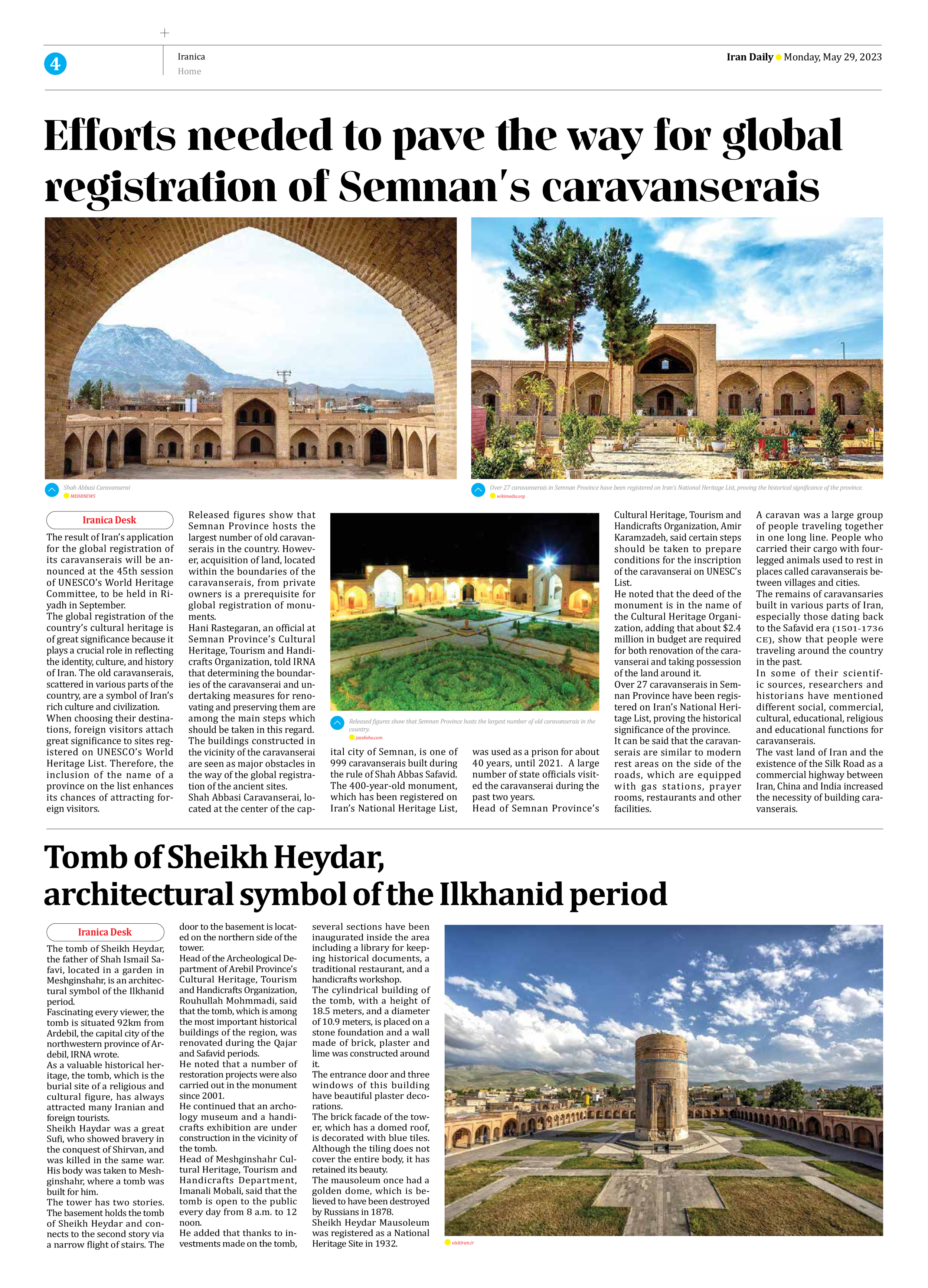
Efforts needed to pave the way for global registration of Semnan’s caravanserais
The result of Iran’s application for the global registration of its caravanserais will be announced at the 45th session of UNESCO’s World Heritage Committee, to be held in Riyadh in September.
The global registration of the country’s cultural heritage is of great significance because it plays a crucial role in reflecting the identity, culture, and history of Iran. The old caravanserais, scattered in various parts of the country, are a symbol of Iran’s rich culture and civilization.
When choosing their destinations, foreign visitors attach great significance to sites registered on UNESCO’s World Heritage List. Therefore, the inclusion of the name of a province on the list enhances its chances of attracting foreign visitors.
Released figures show that Semnan Province hosts the largest number of old caravanserais in the country. However, acquisition of land, located within the boundaries of the caravanserais, from private owners is a prerequisite for global registration of monuments.
Hani Rastegaran, an official at Semnan Province’s Cultural Heritage, Tourism and Handicrafts Organization, told IRNA that determining the boundaries of the caravanserai and undertaking measures for renovating and preserving them are among the main steps which should be taken in this regard.
The buildings constructed in the vicinity of the caravanserai are seen as major obstacles in the way of the global registration of the ancient sites.
Shah Abbasi Caravanserai, located at the center of the capital city of Semnan, is one of 999 caravanserais built during the rule of Shah Abbas Safavid.
The 400-year-old monument, which has been registered on Iran’s National Heritage List, was used as a prison for about 40 years, until 2021. A large number of state officials visited the caravanserai during the past two years.
Head of Semnan Province’s Cultural Heritage, Tourism and Handicrafts Organization, Amir Karamzadeh, said certain steps should be taken to prepare conditions for the inscription of the caravanserai on UNESC’s List.
He noted that the deed of the monument is in the name of the Cultural Heritage Organization, adding that about $2.4 million in budget are required for both renovation of the caravanserai and taking possession of the land around it.
Over 27 caravanserais in Semnan Province have been registered on Iran’s National Heritage List, proving the historical significance of the province.
It can be said that the caravanserais are similar to modern rest areas on the side of the roads, which are equipped with gas stations, prayer rooms, restaurants and other facilities.
A caravan was a large group of people traveling together in one long line. People who carried their cargo with four-legged animals used to rest in places called caravanserais between villages and cities.
The remains of caravansaries built in various parts of Iran, especially those dating back to the Safavid era (1501-1736 CE), show that people were traveling around the country in the past.
In some of their scientific sources, researchers and historians have mentioned different social, commercial, cultural, educational, religious and educational functions for caravanserais.
The vast land of Iran and the existence of the Silk Road as a commercial highway between Iran, China and India increased the necessity of building caravanserais.







